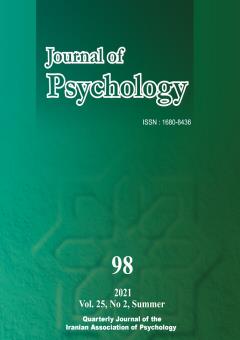-
-
List of Articles
-
Open Access Article
1 - The Effect of Self-Regulation on Academic Resiliency with Mediation of Autonomous Motivation
Maryam Ataii بهرام صالح صدق پور Hasan Asadzadeh Aboutaleb Seadatee Shamir -
Open Access Article
2 - Phenomenological Study of Sedative Factors in Students University
Mozhdeh Alizade Morad YariDehnavi -
Open Access Article
3 - The Relationship between Attachment Style and Moral Identity: The Mediating Role of Empathy
Ghasideh Hojjati zahra naghsh Mohammad Khodayarifard -
Open Access Article
4 - The Efficiency of Trauma Focused-Cognitive Behavioral therapy on Mood and Somatic Symptoms of Children with Interpersonal Trauma
somaye Shahabi Vand Afrooz Afshari leila Cheragh Molaei -
Open Access Article
5 - Explaining the Effect of Parents’ Level of Education on the Self-Concept of High School Students Based on the Mediating Role of Parent-Child Relationship Quality
Arezoosadat Malaknia Kianoosh Hashemian Khadijeh abolmaalialhoseyni -
Open Access Article
6 - Attachment Style, Mindfulness Eating, Mother Beliefs with Child Emotional Eating: Mediating Role of Child Emotion Regulation
mahdieh sarshar shirin zeinali -
Open Access Article
7 - The Mediating Role of Family Functioning in the Relationship between Resilience and Inferiority
ayyob saqqezi Hamideh Yazdani Esfidvajani neda fazlali mohsen golmohammadian
-
The rights to this website are owned by the Raimag Press Management System.
Copyright © 2017-2026







